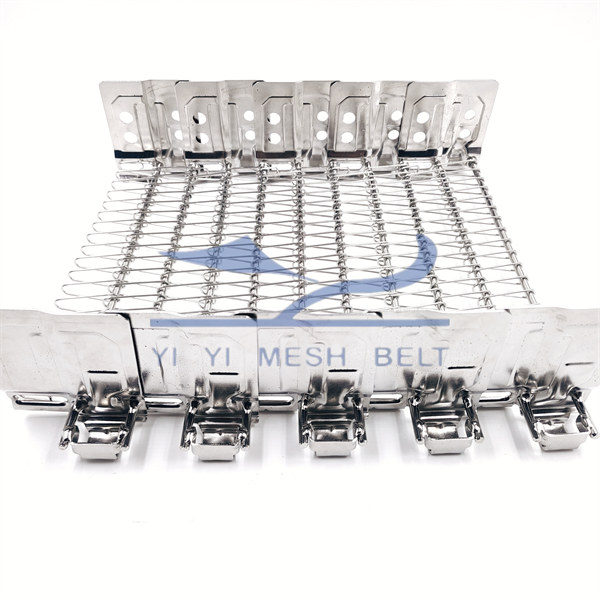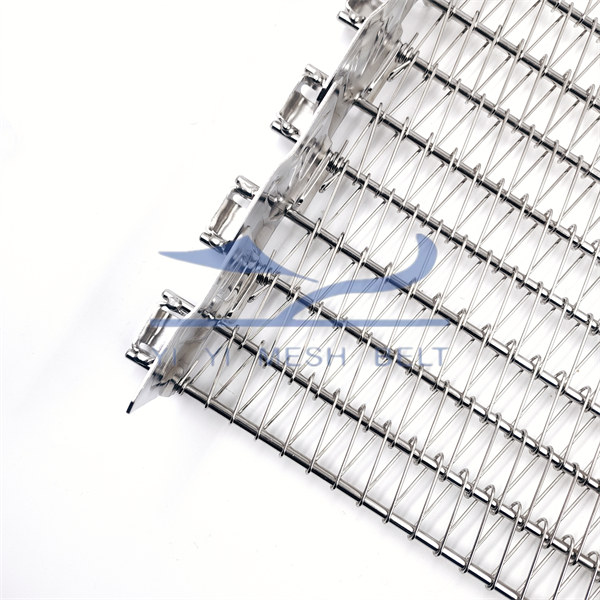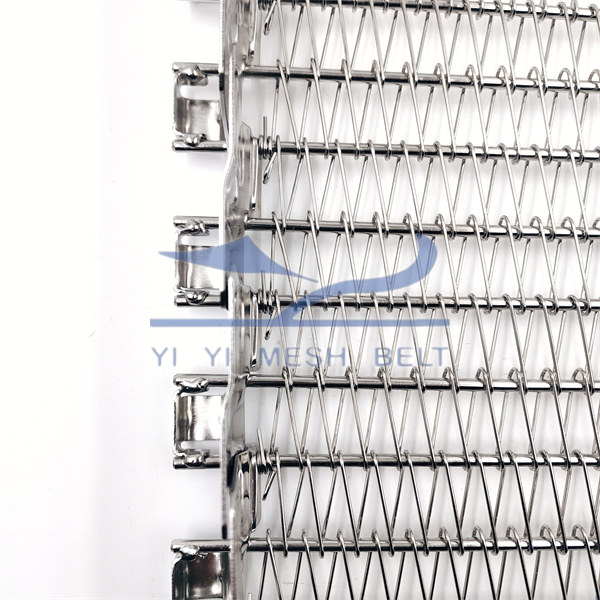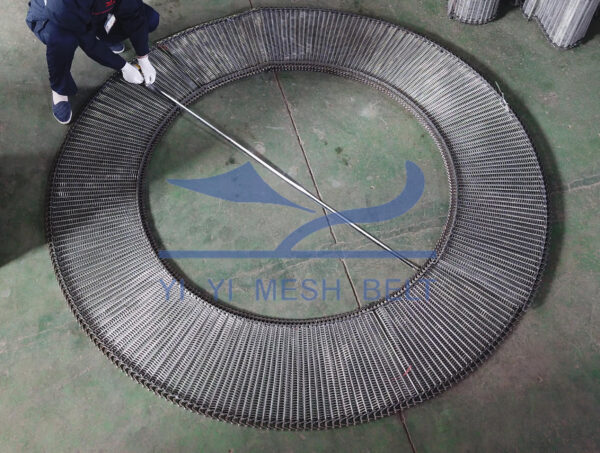Your self-stacker equipment is vital, but the belt needs replacing. The OEM price is high, but can you trust a direct supplier? Choosing a specialist manufacturer saves money without sacrificing quality.
Choosing a specialized stainless steel conveyor belt supplier over the Original Equipment Manufacturer (OEM) is often more cost-effective. A good supplier can match or exceed original specifications by analyzing a sample of your old belt, ensuring quality, compatibility, and significant cost savings for your business.
Making the switch from an OEM to a direct manufacturer can feel like a big risk. Your entire production line depends on that belt stacking correctly, tier after tier. A failure would be catastrophic. I understand this concern because I've helped many customers navigate this exact decision. The key isn't just about finding a lower price; it's about finding a manufacturing partner who understands the deep technical requirements of these specialized belts. Let's break down what you need to know to make your choice with confidence, so you can see why going direct is not just a cost-saving measure, but a smart engineering decision.
What is a self-stacker belt?
Struggling to picture what makes your spiral conveyor "self-stacking"? The terminology can be confusing. The secret to its compact and efficient design is all in the belt itself.
A self-stacker belt is a unique metal conveyor belt with high side plates. As it spirals up or down, the edge of the belt rests directly on the belt layer below it. This clever design creates a self-supporting "belt stack," which eliminates the need for a bulky support frame.
A self-stacker belt, sometimes called a self-supporting belt, is an amazing piece of engineering. The key feature is the tall side plate, or "E-plate," welded onto the outside edge of the belt. As the belt moves up a spiral conveyor, this side plate rests on the flat surface of the belt directly beneath it. This turns the entire belt into its own support structure. You don't need a massive rotating drum or a complex cage of rails to hold the belt up. This design provides two huge advantages. First, it allows for a much more open and easy-to-clean system. Second, it maximizes the amount of conveyor belt you can fit into a small footprint, which is perfect for applications like spiral freezers, coolers, and proofers where floor space is a premium.
Self-Stacking vs. Traditional Spiral Systems
| Feature | Self-Stacker System | Traditional Spiral System |
|---|---|---|
| Support Structure | The belt itself creates the support | Requires a large central drum and rails |
| Design | Open, easier to clean and maintain | Enclosed cage-like structure |
| Footprint | More compact for a given belt length | Requires more space for the support cage |
| Main Component | Highly engineered self-stacker belt | Standard-duty metal or plastic belt |
What are the common self-stacker belt widths?
Ordering a replacement belt1 but not sure about the exact size? Guessing the width can lead to costly mistakes and extended downtime. Knowing the standard sizes is the first step.
While self-stacker belts2 can be customized, common industry-standard widths include 420mm, 660mm, 760mm, 920mm, and 1060mm. Measuring your existing belt's width is the most crucial first step when sourcing a replacement to ensure it fits your conveyor's drive system perfectly.
The width of a self-stacker belt is one of its most critical dimensions, but it's not just about fitting between the conveyor's side frames. The overall width has to be manufactured with very tight tolerances. This is because the belt must engage perfectly with the drive chains or sprockets at the edge of the system. If the belt is even slightly too wide or too narrow, it can lead to jumping, slipping, and uneven wear, which will destroy the belt over time.
This is where the fear of using a non-OEM supplier often comes from. Will they get the dimensions right? At my company, YIYI Mesh Belt, we have a clear process for this. We've handled more than ten major self-stacker belt replacement projects. Our customers usually send us a small sample of their old, worn-out belt. The first thing we do is a full analysis. We test the stainless steel's chemical makeup to ensure the new belt has the correct low-temperature resistance for a freezer. Then, we perform strength tests on the side plates to guarantee they can handle the weight of the stack without collapsing. During production, we pay close attention to the width tolerance and the flatness of the welded cross rods. This guarantees a perfect fit and smooth operation, just like the original.
Common Widths and Their Applications
| Width | Typical Use Case |
|---|---|
| 420 mm | Small baked goods, appetizers, small portions |
| 660 mm | Poultry parts, individual pies, pastries |
| 760 mm | A very common "all-purpose" size for many food lines |
| 920 mm | Frozen pizzas, larger meat cuts, trays of product |
| 1060 mm | High-volume production lines for bulk items |
What is the difference between a conveyor and a conveyor belt?
People often use the terms "conveyor" and "conveyor belt" as if they mean the same thing. They are not the same at all. This simple confusion can cause big problems.
A conveyor is the entire machine, including the frame, motors, rollers, and drive system. A conveyor belt is just one component of that machine—it is the continuous moving surface that products actually ride on. Think of it as the car (conveyor) versus the tires (conveyor belt).
Understanding this difference is fundamental. Think about your car. The entire vehicle—engine, chassis, wheels, seats—is the car. The rubber tires are a critical component, but they are not the whole car. When you get a flat, you replace a tire, not the entire car. It's exactly the same with your industrial equipment.
The Conveyor: A Complete System
The conveyor is the whole machine. It's a complex system designed to move materials from one point to another. Its parts include:
- Frame: The structural skeleton that supports everything.
- Motor & Gearbox: The power unit that drives the movement.
- Drive System: The shafts, sprockets, or pulleys that transfer power to the belt.
- Rollers/Supports: The components that the belt glides over.
- The Belt: The component that actually carries the product.
The Conveyor Belt: The Replaceable Surface
The conveyor belt is the moving surface. In a self-stacker, it is a highly specialized, load-bearing component. It is also a wear item. Over time, through friction, temperature changes, and mechanical stress, it will stretch, wear out, or break. When this happens, you don't need a new conveyor system. You just need a new belt. This distinction empowers you. Since you are only replacing a component, you have the freedom to choose the best supplier for that specific component, not just the company that built the original machine.
What is the most common self-stacker system?
You hear the term "self-stacker" a lot, but what kind of machine are we actually talking about? Understanding the system helps you appreciate the incredible demands placed on the belt.
The most common self-stacker system is the spiral freezer or cooler, which is used everywhere in the food processing industry. These machines use a self-stacking belt to move products vertically in a tight spiral. This saves a huge amount of factory floor space while allowing for long processing times.
When you think of a self-stacker, you should almost always picture a giant spiral. These systems are the workhorses of the modern food industry. Imagine you need to freeze thousands of pizzas or chicken wings per hour. You can't just line them up on a long, straight conveyor; you would need a factory that is miles long. Instead, a spiral conveyor sends the product up or down a tall, compact tower. This gives the product the "residence time" it needs to freeze, cool, or proof properly, all while using a minimal amount of expensive factory floor space.
The self-stacking design is a perfect match for this application. Because the belt supports itself, the system is very open. This allows cold air in a freezer to circulate freely and efficiently around the product on every tier, ensuring fast and consistent freezing. In a bakery, it allows for uniform temperature and humidity in a spiral proofer. The entire efficiency, reliability, and function of these multi-million dollar systems rests on one component: the belt. This is why choosing your replacement belt supplier is such a critical decision. It must be strong, precisely made, and built to last.
Conclusion
Replacing your self-stacker belt directly from a specialized manufacturer is a smart business decision. It saves you money and, with the right technical partner, guarantees quality that matches the original.








